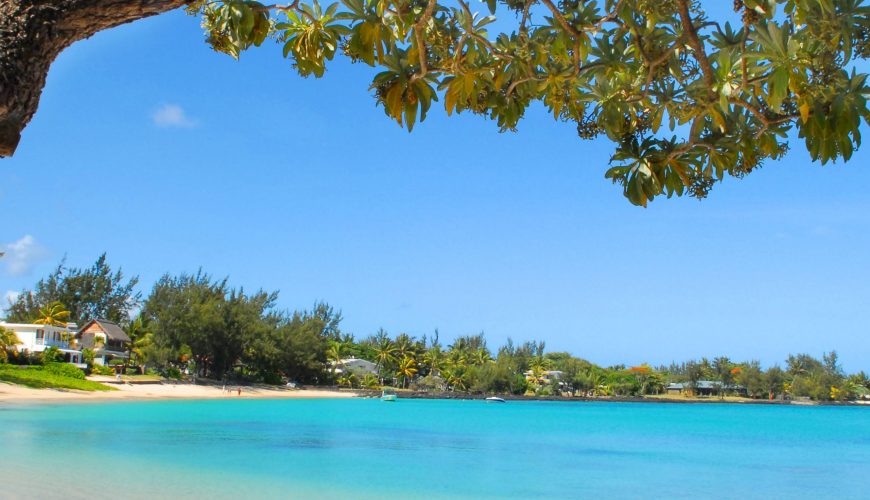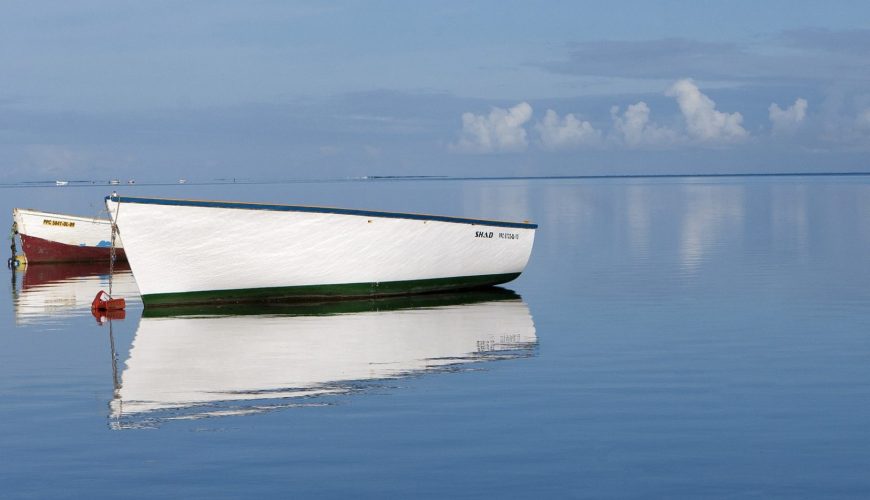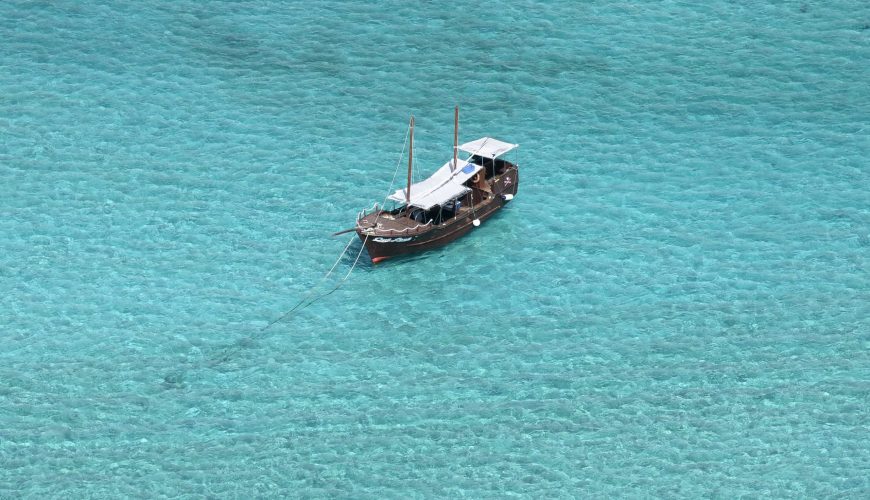It doesn’t take long to understand why Mauritius is one of the hotspots of island getaway among tourists. This tropical island is a year-round holiday destination ideal for those who are yearning for some sunshine and sun-soaked beaches. Situated near the Tropic of Capricorn in the southwest of the Indian Ocean (with close proximity to Madagascar), this ruggedly beautiful island is a real paradise. Its talcum-powder beaches fringed with lofty palm trees, its turquoise water, and warm temperatures have no doubt beckoned holidaymakers across the globe. Touted as the honeymoon destination among love-birds, Mauritius is a real escape from harsh winters and gloomy weather.
The island is basically composed of two main seasons: the notable warm humid summer which begins from November to April having a mean temperature of 24.7 °C (76.5 °F) and then there is the mild winter which starts from June to September with a mean temperature of 20.4 °C (68.7 °F). Luckily throughout the year, the island may receive up to eight hours of blissful sunshine. And its water temperature in the lagoon may vary from 22–27 °C (72–81 °F).
Though during the summer season you might encounter cyclonic weather especially between January and March. But fret not. This is when you can stay indoors and eat typical Mauritian delicacies just like the locals do. Obviously these months are bound to receive much of the rainfalls which range from 900 mm (35 in) on the coast to 1,500 mm (59 in) on the central plateau.
Its relative winter weather on the other hand still attracts many beachgoers since you might always find the weather changing constantly from windy to sunny, which means there is always room for indulging into watersports like Kitesurf.
But of course, this tiny Island is not only about its picturesque beaches and tropical weather. There’s always more to explore and experience. Below find out when is the best time to visit Mauritius and what to do on a monthly basis:
Weather in January
When it comes to January you can still feel the party ambience but the great thing is the fact that you might have lesser tourists lazing on the beaches. You can still stroll around the coastal regions and feast your eyes on the ubiquitous vibrant flamboyant flowers. One of the absolute recommended things to so is to witness the spectacular dragon dance in China Town during the Chinese Spring New Year festival.
Minimum Temperature: 20.5 Maximum Temperature: 27.6
Humidity: 83%
Where to stay: Coastal region
What to bring: Sunscreen, flip flops, summer wear, hat, camera and sunglasses
Weather in February
If you’re visiting Mauritius in February then you can expect rainy or cyclonic weather but the good thing is you might enjoy the cozy setting of your hotel room at an affordable price. And being a multicultural society another festival to witness is the Maha Shivaratri which is likely to occur between February and March. Head to Grand Bassin and learn about the Hindu pantheon.
Minimum Temperature: 20.7
Maximum Temperature: 27.5
Humidity: 85%
Where to stay: Coastal region
What to bring: Sunscreen, flip flops, summer wear, hat, camera, and sunglasses
Weather in March
Make the most out of the hot weather of March by going to nearby islets to enjoy its pristine beaches and translucent water. If you happen to visit the nearby sister island Rodrigues then do attend the ‘Fête du Poisson’ (Fish Festival) which marks the opening of the fishing season. Otherwise, you can enjoy the Holi Festival (Colour Festival) where you’ll get to play with vibrant colours among the locals.
Minimum Temperature: 20.4
Maximum Temperature: 27.4
Humidity: 84%
Where to stay: Coastal region
What to bring: Sunscreen, flip flops, summer wear, hat, camera and sunglasses
Weather in April
Though you might feel the slight drop in temperature you can still wind down at the unspoiled coves of Mauritius. But the weather can still be unpredictable so you might find a bright sunny day turned into a gloomy one. One cultural festival to participate is the Puthandu Festival (Tamil New Year) where you’ll get to see the folkloric dance and eat traditional dishes.
Minimum Temperature: 19.6
Maximum Temperature: 26.3
Humidity: 85%
Where to stay: Coastal region
What to bring: Sunscreen, flip flops, summer wear, hat, camera and sunglasses
Weather in May
If you prefer secluded beaches and tranquility then May might just be your best bet. And to make things even better you can enjoy the best hotel deals of the off-season. Hang out at the hip eateries and clubs around the coastal regions and make new friends.
Minimum Temperature: 17.7
Maximum Temperature: 24.8
Humidity: 83%
Where to stay: Coastal region
What to bring: Sunscreen, flip flops, summer wear, hat, camera, and sunglasses
Weather in June
Experience the pretty laid back month of June where tourists are less and the temperature is just perfect to go to the beach or indulge in adventure activities such as hiking, kayaking or zip-lining.
Minimum Temperature: 16.0
Maximum Temperature: 22.9
Humidity: 82%
Where to stay: Coastal region
What to bring: Sunscreen, flip flops, summer wear, hat, camera and sunglasses
Weather in July
Just like May and June, July is an ideal month to escape the hordes of tourists and experience a rather serene environment. There are many perks to travel during this month, for instance, you will have a mild weather temperature, lower hotel prices, and with practically less chance of having rainfalls.
Minimum Temperature: 15.3
Maximum Temperature: 21.9
Humidity: 82%
Where to stay: Coastal region
What to bring: Sunscreen, flip flops, summer wear, hat, camera and sunglasses
Weather in August
Though August might be somehow a little breezy yet you can still enjoy the sunshine at the beach but expect to meet crowds of European tourists, especially those from France. One cultural festival to attend is the Ganesh Chaturthi where you’ll get the chance to see a farewell procession of Ganesha on many streets.
Minimum Temperature: 15.1
Maximum Temperature: 21.8
Humidity: 82%
Where to stay: Coastal region
What to bring: Sunscreen, flip flops, swimsuit, sweater, hat, camera and sunglasses
Weather in September
With the breezy weather, September becomes the right time to head to the western or eastern coast of Mauritius to enjoy a thrilling kitesurfing experience.
Minimum Temperature: 15.4
Maximum Temperature: 21.8
Humidity: 80%
Where to stay: West and East Coast
What to bring: Sunscreen, flip flops, swimsuit, sweater, hat, camera and sunglasses
Weather in October
October is known as the best kitesurfing month, and if you want a kick of the adrenaline rush then head to Tamarin (in the western coast). Depending on the Hindu calendar you might want to celebrate Divali (the festival of light) among the locals. This is your chance to splurge on some traditional ‘gato patate’.
Minimum Temperature: 16.5
Maximum Temperature: 21.4
Humidity: 80%
Where to stay: West and East Coast
What to bring: Sunscreen, flip flops, swimsuit, sweater, hat, camera and sunglasses
Weather in November
November in Mauritius is certainly one of the best months of the year. This is where you’ll get to bask in the warm sunshine again, and feast your eyes on the colourful bougainvillea and flamboyant flowers. Head to the beach and enjoy the chilled-out ambiance.
Minimum Temperature: 17.8
Maximum Temperature: 25.8
Humidity: 80%
Where to stay: Coastal region
What to bring: Sunscreen, flip flops, summer wear, hat, camera and sunglasses
Weather in December
Celebrating New Year’s Eve in Mauritius is quite an experience. From the pristine beaches to amazing gala dinners organised at the hotels, there’s always something to keep you entertained. This is your chance to join local music shows and swing with the locals.
Minimum Temperature: 19.4
Maximum Temperature: 27.1
Humidity: 81%
Where to stay: Coastal region
What to bring: Sunscreen, flip flops, summer wear, hat, camera and sunglasses









Comment (0)